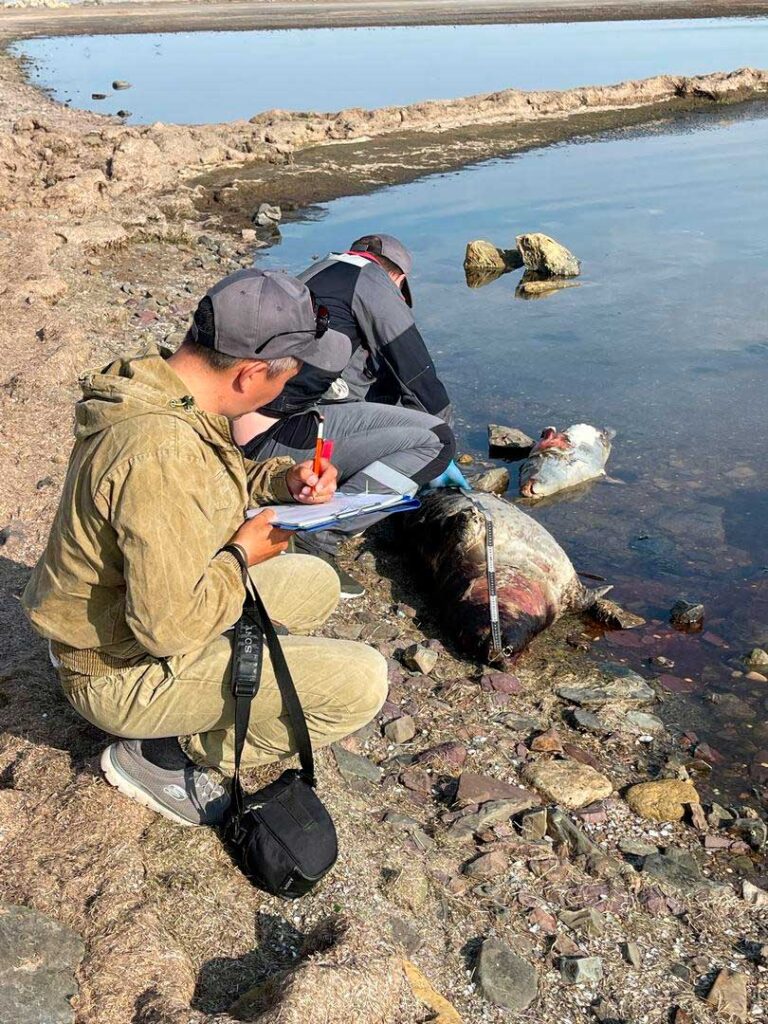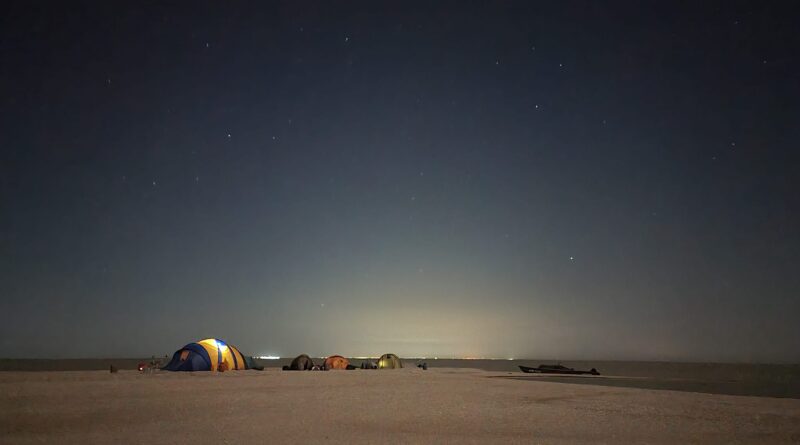Mass Mortality of Caspian Seals in Kazakhstan
On the shores of the Caspian Sea, a mass mortality of Caspian seals was again recorded. A correspondent of Downpour Living Asia Online Magazine, Kazakhstan, tried to find out causes for this tragedy.
The last time, we raised the topic of the seals death in the Caspian Sea six months ago. Then, in an interview with a correspondent of Downpour Living Asia Online Magazine, Assel Baimukanova, a researcher at the Institute of Hydrobiology and Ecology (Kazakhstan), described a complex and, alas, not a rosy picture. Unfortunately, the current reason to turn to this topic is again sad: cases of stranding a shore of dead seal carcasses onto the Caspian coast have been recorded for the second time, in less than a month. We asked for a comment to a familiar specialist.
– Assel, can you say something about the reasons for the death of the last group of animals discovered in mid-May?
– We did not go to the place where this group of seals was found. From media reports, it became clear that all the carcasses found were at different stages of decomposition. So, it is almost impossible to say anything definite about the causes for their death. The only thing we can talk about is whether the dead animals have mechanical injuries. In those that the sea threw out in April, we identified them. 14 Caspian seals out of 67 individuals that were examined were injured. A few seals had their jaws dislocated or fangs knocked out. One seal did not have a front flipper. Of course, such injuries could have been inflicted after death, so a deep examination is required.
– What is the most common cause for mass death of seals?
– Look, our studies show that it is in the Kazakhstani part of the Caspian Sea that there are large haul-out sites of the Caspian seal in spring and autumn. Annual aerial surveys have shown that up to 60 thousand individuals gather on haul-out sites in spring. Naturally, some part of seals dies during this period. In spring, when the western wind becomes predominant, the stranding of animal corpses on the Tyub-Karagan Peninsula coast is noted. This year, they were also found on the Buzachi Peninsula in the Karazhambas site. Seals die at different times, so most of the carcasses taken out are at different stages of decomposition. In such a situation, it is practically impossible to take toxicological, histological and virological samples, the analysis of which could indicate a cause for death of animals. Often, we can only conduct an external examination of corpses to determine if there are any mechanical injuries on the body or signs of entanglement in fishing nets.

Without fail, we take fangs to determine the age and, if possible, tissues of certain organs for histological studies, stomachs and intestines to study the nutrition of seals. In order to study the state of animal health, in vivo studies are needed, which include seal capture and sampling to analyze the distribution of various diseases in the population. But for catching, you need to get an appropriate permission. Unfortunately, we did not get it for last autumn and this spring. We hope to do it by the autumn of 2022.
– It is known that abandoned fishing nets are a big problem for the conservation of seals. I know that you have been collecting them for a long time. Are there any changes? Has the number of such cases decreased?
– We cannot assess the situation. Yes, there is a project “Collecting Abandoned Fishing Nets and Garbage”. Within its framework, in 2021, we collected almost 4312 kg of fishing nets. All these nets were collected on Kulaly Island, an island of the Tyulen’i Islands archipelago. We cannot determine how many nets are thrown out by fishermen. But it is obvious that they will not be thrown away less until systematic explanatory work with the people is carried out. This year we found dead seals in nets and also on sturgeon hooks.
– You have earlier said that for effective protection it is necessary to include seals in the list of protected species for the Adamtas Nature Sanctuary, a special protected area of a local recognition…
– Yes, the situation has not changed here. But we continue to work on creating a state natural reserve that will cover all important Caspian seal haul-out sites. This would be the most effective measure for the Caspian seal conservation in the Kazakhstan part of the Caspian. After all, the territory of the reserve is divided into two zones: a zone with a protected regime, where any economic activity is prohibited, and a buffer zone, where various forms of economic activity can be carried out, but with certain restrictions. The allocation of a particular zone should be made both taking into account the variability of climatic and hydrological factors, the characteristics of biology and the distribution of seals, and taking into account the development of economic activity in the Caspian Sea, primarily in the oil and gas sector. The areas of the sea and the islands that are most significant for seals during the breeding and hauling-out, and at the same time, may not lose their significance for a long time with the ongoing regression of the sea, can be attributed to the zone with a protected regime. These are, for example, the water area of the Caspian Sea on the Uralskaya Borozdina, Kulaly Island and the islands in the Kendirli Bay.
Source: Downpour Living Asia Online Magazine.
The photographs by M.T. Biamukanov, A.T. Biamukanova, The Institute of Hydrobiology and Ecology, (Irgeli, Kazakhstan).

